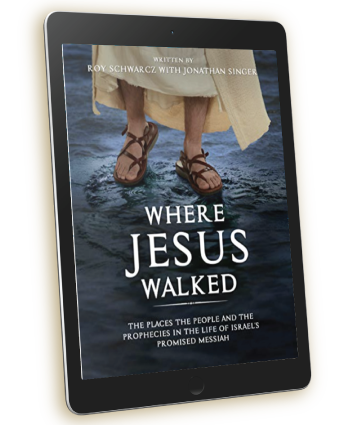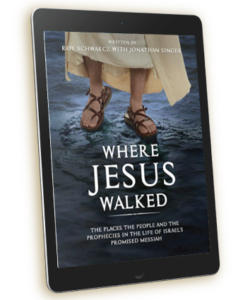Exodus 40:1-11 God gave the Tabernacle to Israel, so they could worship Him and make it possible for Him to dwell among them. The Tabernacle foreshadowed the worship that was to come. It was modeled after the pattern that God gave to Moses (Ex. 25:40). It has been one year since the plagues began on Egypt and now, they were now ready to dedicate the Tabernacle for worship and thanksgiving for His deliverance. In the course of that year, Israel had begun their journey through the wilderness and experienced His miraculous guidance through the pillar of cloud by day and by night (Exodus 13:17-22); God’s pushing back the waters of the Red Sea (Exodus 14:1-31); His discipline when they complained, grumbled, and murmured (Exodus 15:22-27; 16:1-36; 17:1-7). God gave them victory in war against the Amalekites (Exodus 17:8-16). Gave His covenant and Law on Mt. Sinai (Exodus 19:1-24:18). Their idolatry with the golden calf (Exodus 32:1-35) and the renewal of the covenant (Exodus 34:1-35). Now the completion of the Tabernacle (Exodus 35:1-39:43) will allow them to have a means of atonement.
God told Moses to assemble the Tabernacle on the first day of the first month what a wonderful way to begin the new year (Exodus 40:2 & 17). All the furnishings were now to be set in place. The Tent of Meeting, the Ark of the covenant, the veil that hid the ark from exposure to others, the Table of Showbread and its utensils, the Lampstand and its lamps, the Gold Altar of Incense, the curtain for the entrance to the Tabernacle, the Altar of Burnt Offering, the Laver was to be filled with water and place between the Tent of Meeting and the Altar, the Courtyard and curtain at the entrance to the Courtyard.
Moses was instructed to anoint the Tabernacle and its furnishings: to make them holy, and to set them apart for God. He was also told to anoint the Altar of Burnt Offering and its utensils for the purpose of making them holy (Exodus 40:10). He was also instructed to anoint the Wash Basin and pedestal, consecrating them (Exodus 40:13).
Exodus 40:12-16 God then gave Moses instructions on the consecration of the priests. Moses then brought the priests to the entrance of the Tabernacle to wash them with water which was part of the sanctification of the priests. We are sanctified as priests through Mikvah which in the New Covenant is known as baptism. Torah required women to have a mikveh following their menstrual cycle before they can resume sexual relations with their husbands. Men also must undergo cleansing for various impurities as outlined in Lev. 15. Mikveh was required for all before entering the Temple. After Aaron was cleansed, Moses dressed him in the sacred clothing anointing and consecrating him. Then he did the same for Aaron’s sons putting on their tunics, and anointing them for service, as he did Aaron. This ceremony set apart the priests for ministry and set precedent on how future priests would be ordained for service.
Exodus 40:16-33 Moses did everything the Lord commanded. His obedience is mentioned eight times, after each step of setting up the Tabernacle. Moses constructed the base, frames, crossbars, and the posts. He then spread the coverings over the tent. Moses then placed the Testimony [the Ten Commandments] in the Ark of the Covenant, attached the poles, and placed the Mercy Seat upon it. The Ark symbolized God’s presence, rule and mercy. Then Moses placed the Ark in the Holy of Holies. He then hung the inner curtain or veil and shielded the Ark of Testimony just as God commanded. Moses placed the Table of Showbread in the Tabernacle on the north side of the holy place. Moses then set the bread before the Lord. Then Moses placed the Menorah in the Tabernacle opposite the Table on the south side. He set up the lamps before the Lord illuminating the holy place so that the priests would have light to serve there. Then Moses placed the Altar of Incense in front of the veil and burned incense on it just as God commanded him. Then Moses put up the curtain at the entrance that divided the Tent of Meeting from the Courtyard. Next Moses set the Altar of Burnt Offering near the entrance to the Tabernacle. Moses then offered burnt offerings and grain offerings to the Lord. Then Moses placed the Laver between the Tent of Meeting and the Altar and put water in it. The Laver was used by Moses, Aaron, and the priest to wash their hands and feet before entering the Tent of Meeting or approaching the Altar. Moses did this just as God commanded. Finally, Moses hung the curtain at the entrance to the Tabernacle.
Exodus 40:34-38 In one of the greatest manifestations of God’s power in Scripture, God’s glory came to the Tabernacle and filled it with His glory and presence. The pillar of cloud was how God led Israel through the wilderness wanderings: this was God’s Shekinah glory, which now descended on the Tabernacle. This was a far greater display of God’s glory because Moses was not able to enter the Tabernacle. When the cloud of God’s glory descended on Mt. Sinai (Exodus 19:18-20) Moses was able to stand before God’s glory, but not now. There likely was a burst of light that broke forth from the Holy of Holies, that was overwhelming. The same thing happened when Solomon dedicated the Temple in Jerusalem (1 Kings 8:10-11). There was a similar manifestation described in the New Covenant on Mt. Hermon also known as the Mount of transfiguration above Caesarea Philippi in Matthew 16:28-17:3.
God gave the cloud to hang over the Tabernacle by day and a fire within the cloud by night. God gave it as a testimony so all Israel could see indicating that God was guiding and protecting them as they journeyed to the promised land. God was faithful to His people all throughout their pilgrimage to the Promised Land. For the next thirty-eight years, this cloud would be a constant companion to God’s people as they wandered in the wilderness. God led them until they reached their destination and He promises the same to those who will come to Him in His appointed way.


